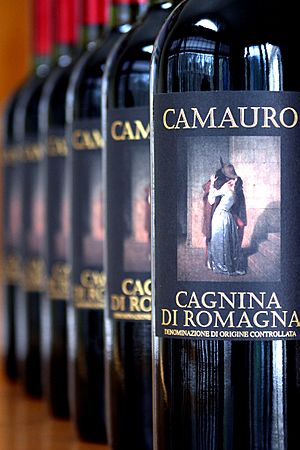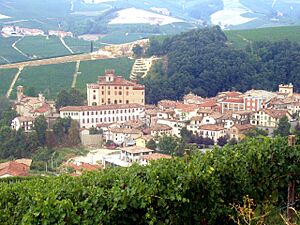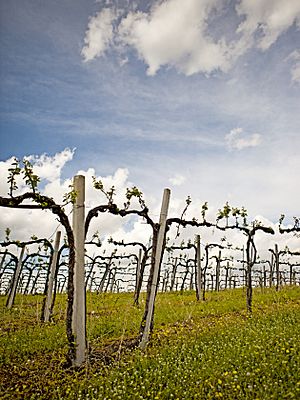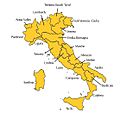Italian wine facts for kids
Italy is famous for having some of the oldest places where wine is made. Italian wines are known all over the world for their many different types. Italy makes the most wine globally, followed closely by Spain and France. It produces about 45 to 50 million hectolitres (which is a lot of wine!) each year. This means Italy makes about one-third of all the wine in the world.
Italian wine is sent to many countries and is also very popular in Italy. Grapes are grown in almost every part of the country. There are more than one million vineyards, which are fields where grapes grow.
The Etruscans and Greek settlers were making wine in Italy long ago. This was even before the Romans started their own vineyards around 200 BC. The Romans were very good at growing grapes and winemaking. They were pioneers in making wine on a large scale. They also developed ways to store wine, like using barrels and bottling it.
Contents
History of Italian Wine
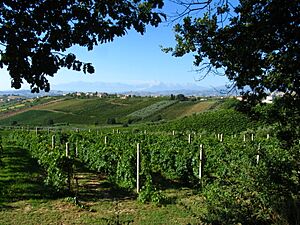
People have grown wild Vitis vinifera grapes for thousands of years. But winemaking really grew when the Greeks started settling in Italy. The Mycenaean Greeks brought grape growing to Sicily and southern Italy. This was well established by the time many more Greeks came to Italy around 800 BC.
Italian wine production grew even more after the Romans defeated the Carthaginians in the 2nd century BC. The Carthaginians were known as masters of winemaking. Large farms, called plantations, started up in many coastal areas. These farms used enslaved people to work. They grew so much that in 92 AD, Emperor Domitian had to order many vineyards to be destroyed. This was done to make more fertile land available for growing food.
Wine Production Facts
In 2005, Italy was the second-largest wine producer in the world. It made about 20% of the global wine supply. France produced slightly more, at 22%.
Also in 2005, Italy's table wine made up 32% of all table wine imported into the U.S. Australia's share was 24%, and France's was 20%. Italy and Australia's share of imports has grown quickly in recent years.
How Italian Wine is Made
Grapes are grown in almost every part of Italy. There are over 1 million vineyards. Each region takes great pride in its carefully looked after and neatly trimmed vines.
Italian wines are often a bit acidic and dry. They are usually light to medium in body, with lots of flavour and smell. Because of these qualities, Italian wines are generally best enjoyed with food. They are not usually drunk on their own.
Growing Grapes in Vineyards
In some places, the grapevines are trained to grow along low supports. In other areas, they climb like tall, thin young trees. The people of each region are also proud of the wine they make from their own grapes.
Winemaking Methods
Most winemaking in Italy happens in modern wineries. However, some villagers still make wine for themselves using old methods. They sometimes tread the grapes with their bare feet until the juice comes out. They believe this ancient way still makes the best wine.
Images for kids
See also
 In Spanish: Vino de Italia para niños
In Spanish: Vino de Italia para niños


